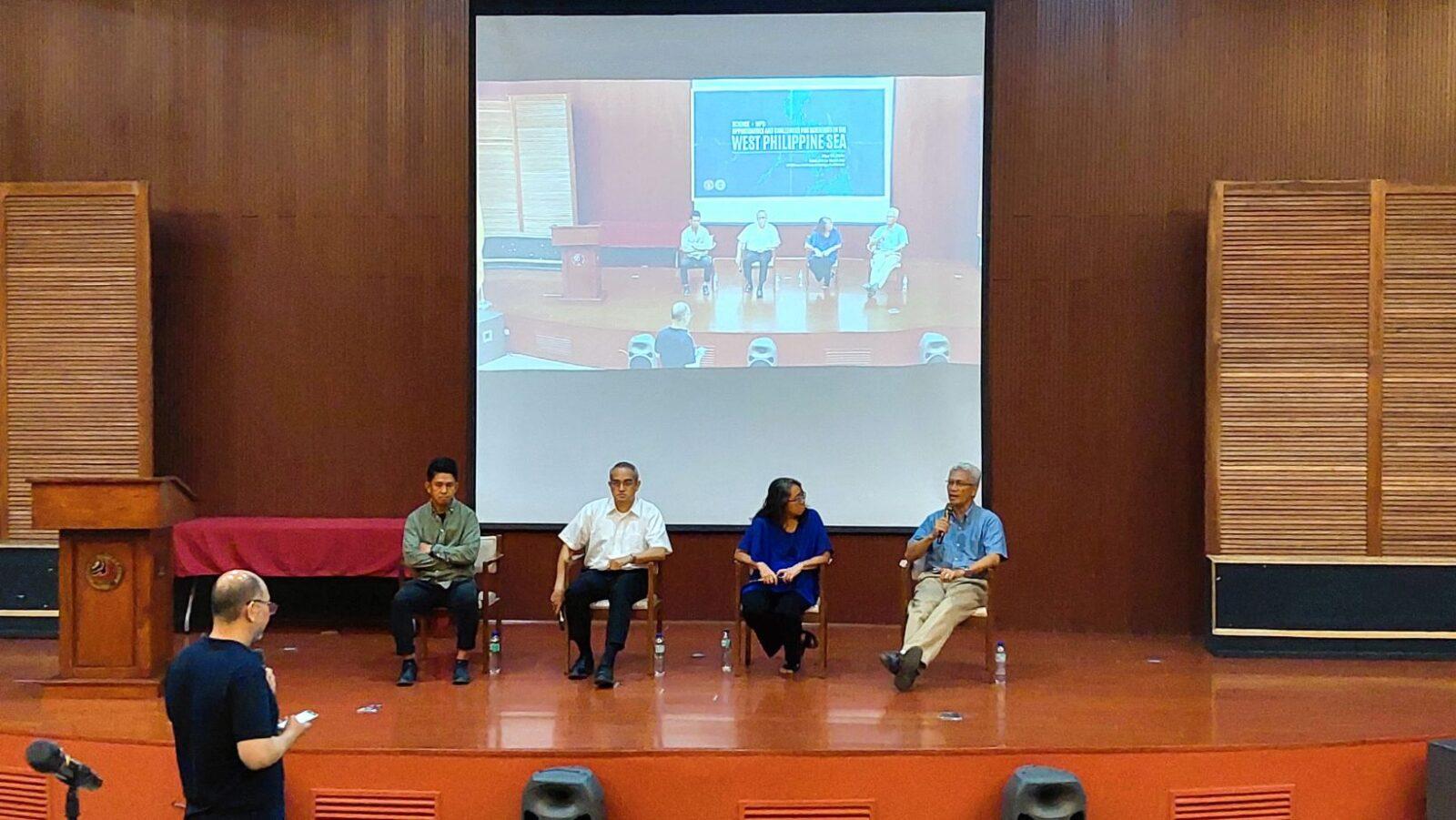
By Dr. Theresa Mundita S. Lim
Dragons feature prominently in mythology, folklore, and many cultures across the world. These magical creatures are often described as huge, winged, serpent-like, and fire-breathing beasts. Though these mystical beings inhabit the realm of fantasy, there are real-life “dragons” that are just as fascinating as the legendary ones. Like the dragons of lore, these animals are four-legged, cold-blooded, reptiles—lizards.
There is a wide variety of lizards in Southeast Asia that are found nowhere else in the world. The most popular among them are Indonesia’s komodo dragons (Varanus komodoensis), Philippine sailfin dragons (Hydrosaurus pustulatus), Sulawesi lined gliding lizards (Draco spilonotus), common flying dragons (Draco volans), and the recently discovered Khammouan/Khammouane karst dragon (Laodracon carsticola).
Lizards are critical for seed dispersal, controlling insect populations, and other important ecological functions. In addition, they are vital food sources for different animals. Learn about these unique species that exemplify the region’s biological diversity.
Komodo dragon (Varanus komodoensis)
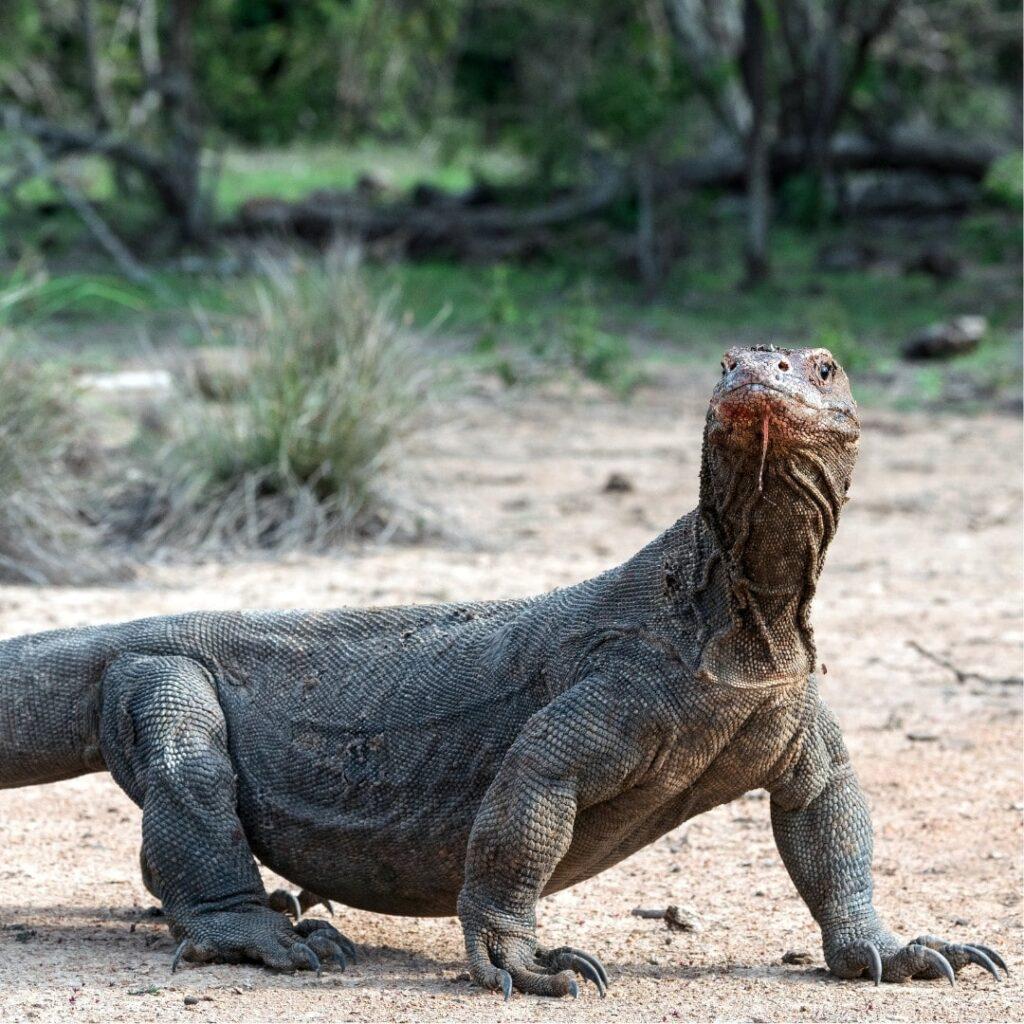
Living off the coast of Indonesia’s Lesser Sunda Islands known as Komodo National Park, komodo dragons are the largest of all lizards, measuring about 10 feet long and typically weighing up to 154 pounds. Komodo dragons can thrive in severe climate conditions, and can live up to 30 years. Although they can be seen on islands, these carnivores prefer to stay in the tropical forests of the islands. They have long tails, can swim, and can even run as fast as 19 kilometers per hour.
Compared to other reptiles, they only have a small population, and are only found in five islands in Indonesia. They help prevent the spread of diseases by eating carcasses, thus promoting the overall health of the ecosystem. With the establishment of patrols and increased community understanding of the need to protect these species, the Indonesian government has improved ecotourism practices at Komodo National Park, thereby strengthening the conservation of these dragons.
Philippine sailfin lizard (Hydrosaurus pustulatus)
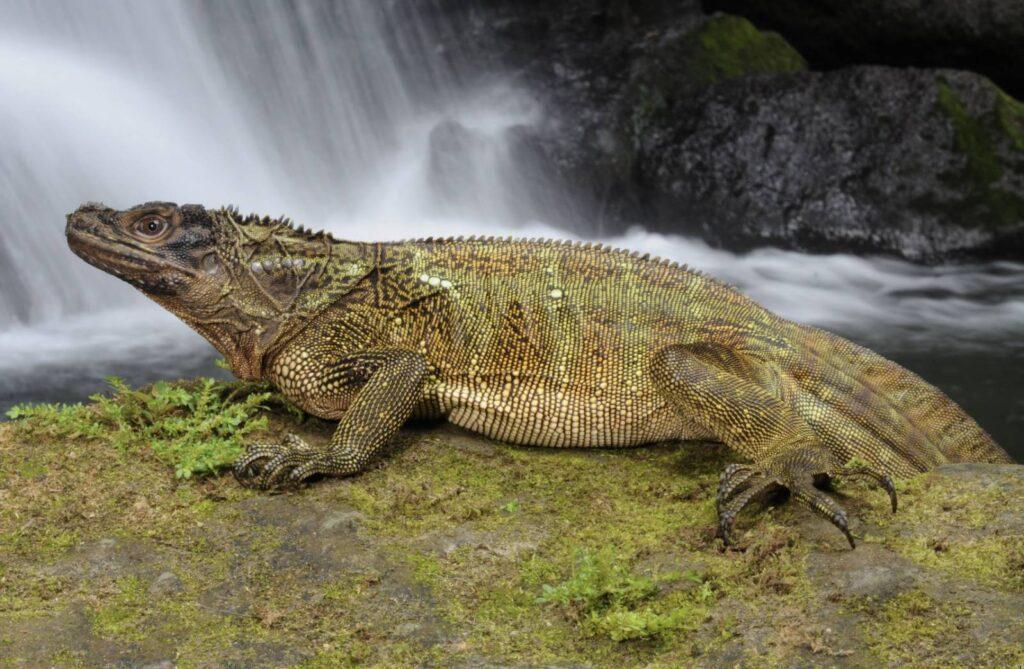
Philippine sailfin lizards (Hydrosaurus pustulatus), also called Philippine sailfin dragons, belong to a large semiaquatic lizard family: agamids, which are closely related to iguanas. Agamid lizards have scaly bodies, well-developed legs, and moderately long tails. Some agamid lizards can also change colors to regulate their body temperatures. They can be found in all major islands of the country, except Palawan. They have large feathers on their backs that look like a sail (crest), and can grow up to 4 feet long.
Like komodo dragons, Philippine sailfin dragons are strong swimmers. Smaller, juvenile lizards can run briefly on the water surface. These omnivores live in areas with dense vegetation along the coasts and near rivers, riverbanks, lakes, mangrove forests, and even in flooded rice fields that are close to natural forests. They go by several local names: their Tagalog name is layagan or balubid, while they are called ibid in the Visayas region.
Sulawesi lined gliding lizard (Draco spilonotus)
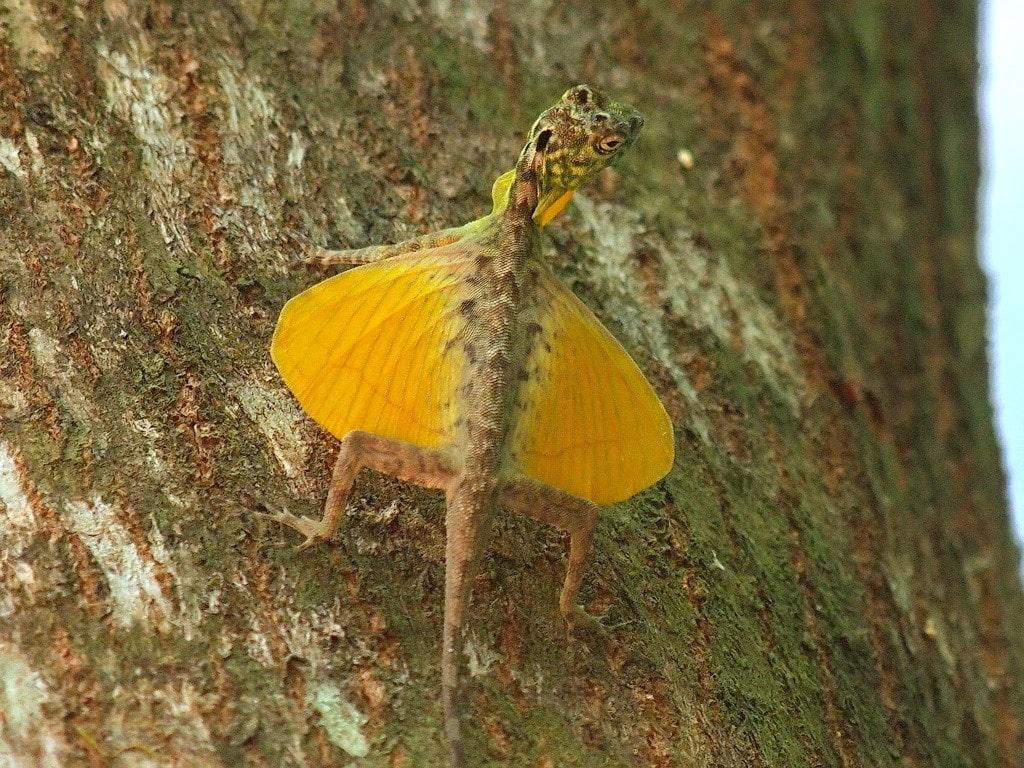
Sulawesi lined gliding lizards (Draco spilonotus) are commonly found in forested areas of Sulawesi, an island in Indonesia. They are actually confined to that island, particularly in Northern Sulawesi’s Tangkoko National Park. As medium-sized lizards, their length ranges from 5 to 10 centimeters. They can survive hot and dry climates and have the ability to camouflage. These lizards live in trees, and they feed on ants and termites.
Males have two patagia, winglike webs of skin connecting the lizards’ limbs to their bodies, enabling them to glide from one tree to another. Each patagium is yellow with brown lines. Each male also has a round, yellow skin flap called a gular flag attached to its neck. Gular flags serve as the males’ main means of communicating with other lizards, especially when they are trying to attract females.
Common flying dragon (Draco volans)
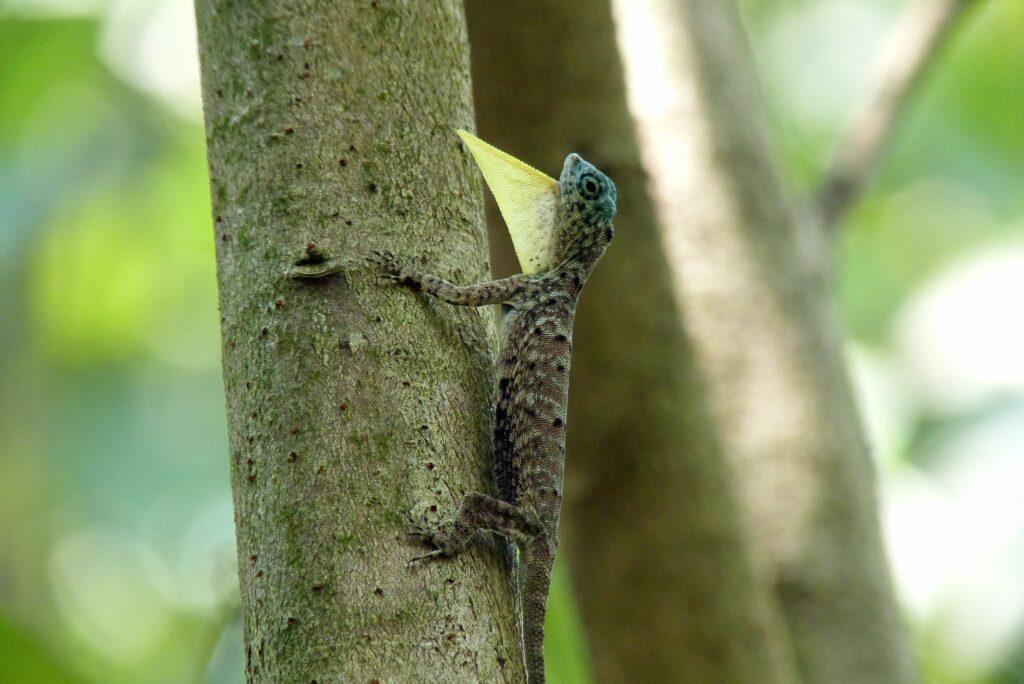
Common flying dragons (Draco volans), otherwise known as Javan flying dragons, are well adapted to live in trees, which is why they are called arboreal lizards. They can only be found in the rainforests of Southeast Asia, especially in densely wooded habitats. They grow to a length of up to 22 centimeters from head to tail; their bodies are tan-colored, with dark flecks. The “wings” of the males are tan to bright orange with dark banding; females have irregular markings instead of banding on their flaps. Like most Draco lizards, this species mainly eats ants and termites. They move from tree to tree not just to hunt for food and attract mates, but also to escape from possible danger.
Green crested lizard (Bronchocela cristatella)
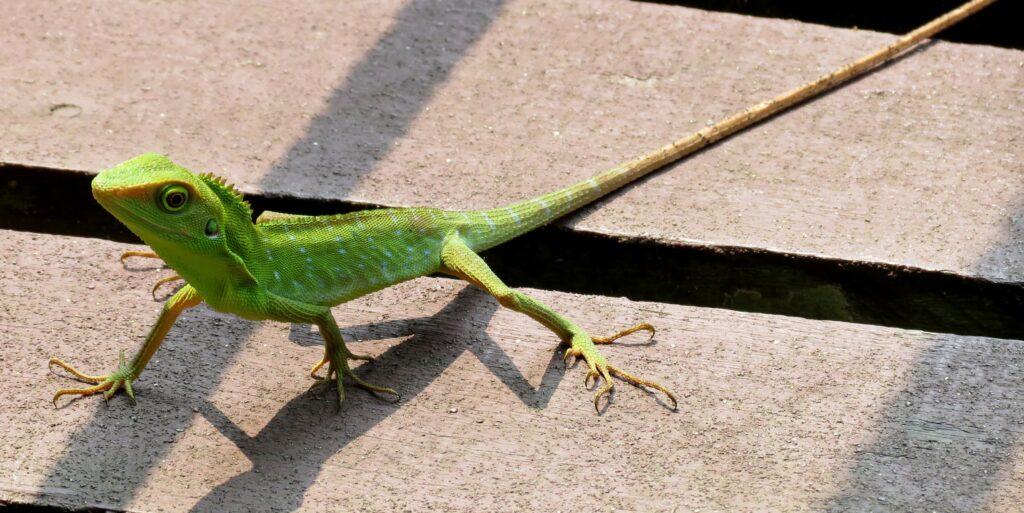
The green crested lizard (Bronchocela cristatella) can be found in Myanmar, Thailand, Malaysia, Singapore, the Philippines, and Indonesia. Bright green and sometimes sporting a blue tint on its head, it can change its color to a darker brown when threatened. Its average body length is 13 centimeters; including the tail, this lizard stretches up to 57 centimeters, meaning this appendage makes up 75% of the creature’s total length.
Green crested lizards live in primary and secondary forests, but can also be found in parks, gardens, and in many habitats from rural areas. The males have a neck crest for attracting partners. In Singapore, the B. cristatella population is declining due to competition with changeable lizards (Calotes versicolor), an introduced species that is considered invasive in some Southeast Asian countries.
Giant forest dragon (Gonocephalus grandis)
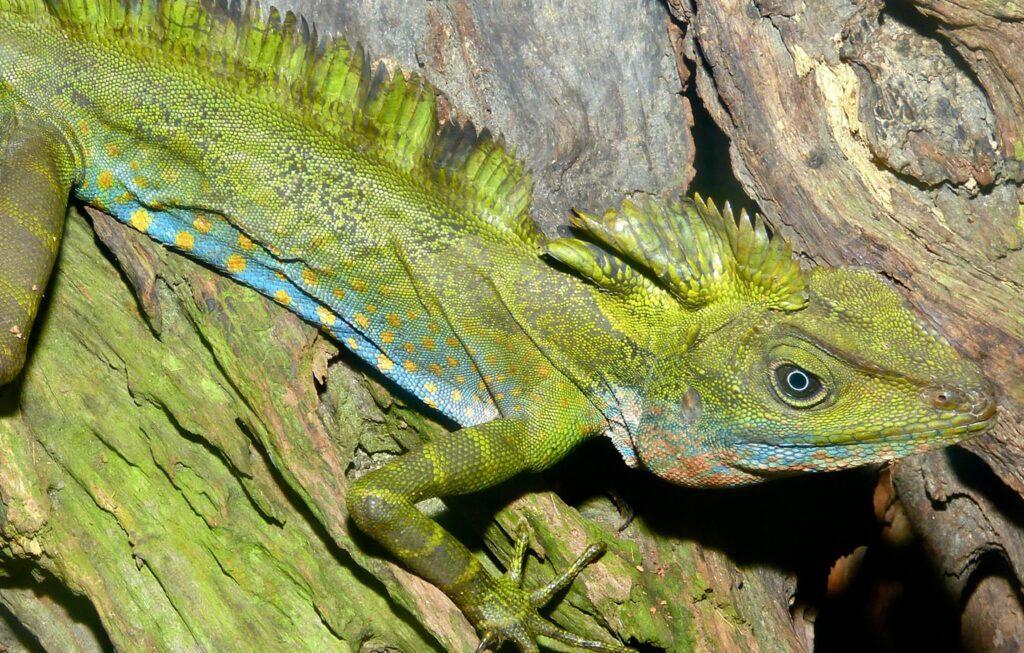
Giant forest dragons (Gonocephalus grandis) or Malayan crested lizards are found in Indonesia, Malaysia, Myanmar, Thailand, and Vietnam. Adult males have large and pointed green-colored crests on their necks and backs, and sport a blue-and-yellow pattern on the sides of their bodies. Adult females, on the other hand, are of a similar color, sans the green crests.
Interestingly, these lizards can change their color from green to black in minutes. Like other members of the Agamidae family, they have long tails and well-developed muscular legs. In fact, these lizards are agile, and can run quite fast on the forest floor or when climbing up on tree trunks.
Khammouan/Khammouane karst dragon (Laodracon carsticola)

The Khammouan (or Khammouane) karst dragon (Laodracon carsticola) is a species that’s new to science. Discovered in 2022 in a limestone landscape in Khammouan Province, Lao PDR, these dragon lizards eat ants and have an outstanding ability to camouflage themselves. Their black-and-gray scale patterns match the limestone rocks and outcrops upon which they climb; unless they move, it is nigh-impossible to detect them. These lizards are approximately 15 centimeters in length, with blue or gray eyes and some red and blue spots. Thier rough skin helps them climb coarse rocks. Limestone karst formations, such as karst towers, caves, and sinkholes, are important habitats for dragon lizards, as well as many other unique species in the region.
An increase in sustained and coordinated efforts toward conserving their natural habitats would certainly benefit initiatives to protect all of these unique “dragon” species, some of which are known only from small, fragmented populations. Raising awareness on the need to safeguard these dragons is also essential, as they are crucial allies in protecting people against dangerous zoonotic diseases, as well as maintaining balanced, well-functioning ecosystems. —MF
About the Author: Dr. Theresa Mundita S. Lim is the executive director of the ASEAN Centre for Biodiversity (ACB). A veterinarian and wildlife management expert, she was the director of the Biodiversity Management Bureau of the Department of Environment and Natural Resources of the Philippines prior to joining the ACB. She also chaired the United Nations Convention on Biological Diversity’s Subsidiary Body on Scientific, Technical, and Technological Advice (SBSTTA) from 2017 to 2018. To know more about the ACB, visit www.aseanbiodiversity.org.






